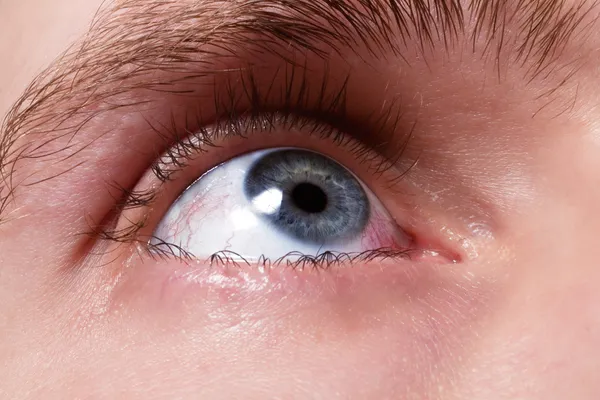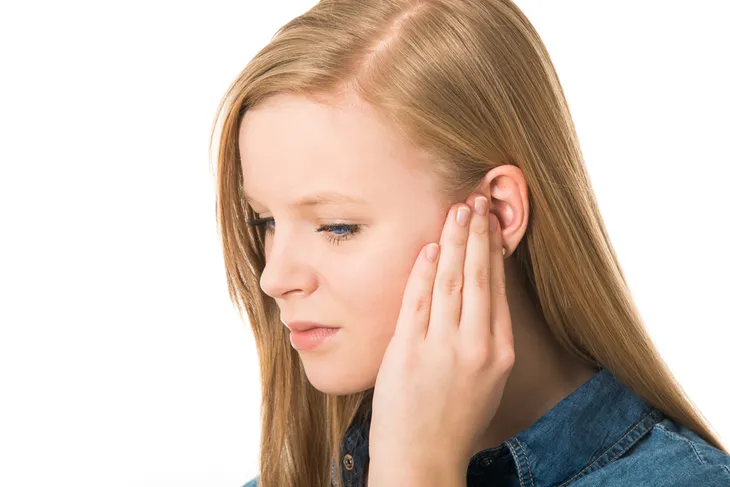There are a number of conditions that can lead to facial nerve paralysis (or facial nerve palsy), from stroke, Bell’s palsy, and even injury to the head and neck. In some cases the paralysis is temporary, but in other cases it can have more long-term implications.
While many different health conditions can cause facial paralysis, the symptoms can vary slightly depending on the root cause. Here are seven symptoms associated with facial nerve paralysis…
1. One Side is Affected
Healthline.com explains that in many cases, the patient with facial paralysis may only experience a loss of control of their face on one side. This is a common symptom of Bell’s palsy and stroke, notes the source.
However, the source also points out that although symptoms are similar between Bell’s palsy and stroke, it’s important to distinguish between them. A stroke patient can experience weakness in one side of their body (arms and legs) but may still be able to move their facial muscles on the affected side, it adds.
2. Difficulty Making Expressions
A post on the New York Times explains there is a noticeable difference in the face in those with any form of facial paralysis. You may notice a patient only blinking on one side, or only moving one side of their mouth when speaking.
Another sign is that smiling or grimacing may be suppressed in the patient, adds the source, so it may be tougher to read the person’s mood based on facial expressions. The “fine movements of the face” are often compromised, it adds.
3. Trouble Eating/Drinking
Facial palsy can make it more difficult “to seal your lips around cups and cutlery resulting in leakage of food or fluid when eating and drinking,” explains FacialPalsy.org. Because of weakness of muscles in one side of the face, food can collect in that side, making it difficult to chew and swallow.
Another side effect of this difficulty in properly chewing food is that the patient may withdraw from social situations when there’s eating involved, adds the source. “Eating and drinking can be messy which may make you reluctant to eat out or in the company of others,” it offers.
4. Headaches/Seizures
While about 75-percent of facial paralysis cases involve Bell’s palsy, in some cases in can be from other health issues that can be a bigger threat. More specifically, facial paralysis can be an indicator of a brain tumor, according to the Dallas Ear Institute.
The source also notes that if a tumor is the underlying cause, the patient may also experience headaches, seizures and even hearing loss over time. It’s probably a good idea to let a medical professional sort out these symptoms for a proper diagnosis.
5. Dry Eyes
The Paparella Ear Head & Neck Institute in Minnesota explains that with facial paralysis, blinking is diminished therefore inadequately keeping the eye hydrated. “Considerable attention must be given to maintaining a healthy eye, which requires a constant flow of tears,” it adds.
The source notes that aside from drying out, prolonged loss of tears can cause the formation of ulcers on the cornea “and possible loss of the eye”. Using the back of your finger to pull down the affected eyelid is an effective way to keep the eye moist, suggests the source.
6. Hemifacial Spasms
These types of spasms are not so common in general, but can occur when Bell’s palsy is the underlying cause of facial paralysis, according to the Mayfield Clinic. Even though the patient’s face is paralyzed on one side, there can still be some involuntary movement of the facial muscles.
These twitches that affect part of the face can also be triggered by injury or tumor, adds the source. Botox injections can be useful in neutralizing the affecting muscles (by blocking electrical signals) and therefore calming the involuntary twitches, offers the clinic. Some medications may also be recommended by your doctor for the twitches.
7. Sound Sensitivity
The Michigan Ear Institute said those with facial paralysis may also experience increased sensitivity to sound as well as pain behind the ear. In fact, ear specialists are often called upon to treat facial nerve problems because of their close association, notes the source.
The source explains that the facial nerve travels from the brain through the ear (temporal) bone through the auditory canal, which is associated with the nerves that control hearing and balance. A hearing test can “determine if the nerve disorder has involved the delicate hearing mechanism,” it adds.










